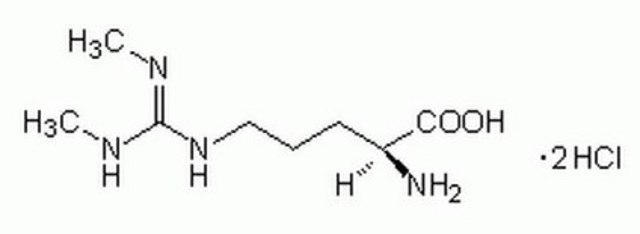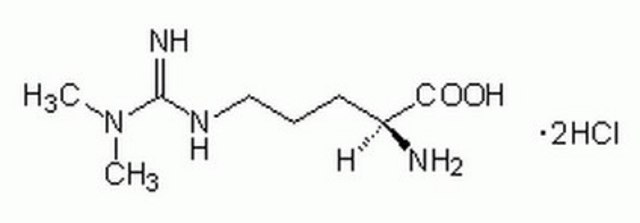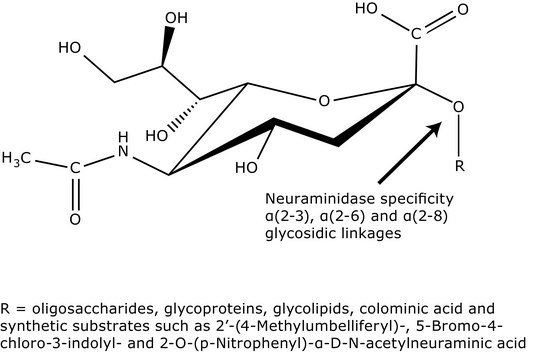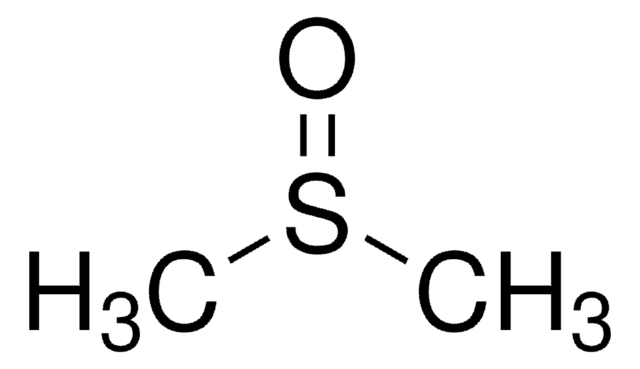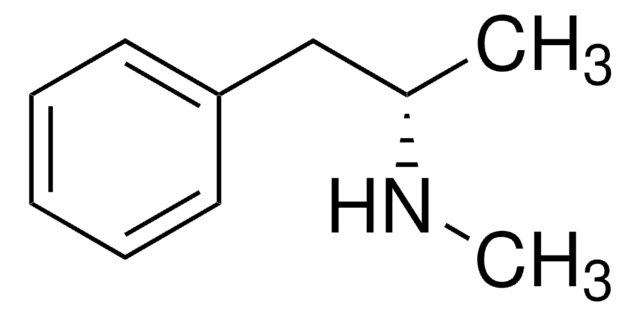推荐产品
质量水平
方案
≥95% (HPLC)
表单
powder
颜色
off-white
储存温度
room temp
SMILES字符串
N[C@@H](CCC\N=C(\N(C)C)/N)C(=O)O
InChI
1S/C8H18N4O2/c1-12(2)8(10)11-5-3-4-6(9)7(13)14/h6H,3-5,9H2,1-2H3,(H2,10,11)(H,13,14)/t6-/m0/s1
InChI key
YDGMGEXADBMOMJ-LURJTMIESA-N
一般描述
Asymmetric dimethylarginine (ADMA) is a naturally occurring chemical found in blood plasma. It is a metabolic by-product of continual protein modification processes in the cytoplasm of all human cells. It is closely related to L-arginine, a conditionally-essential amino acid. ADMA interferes with L-arginine in the production of nitric oxide, a key chemical to endothelial and hence cardiovascular health. Asymmetric dimethylarginine is created in protein methylation, a common mechanism of post-translational protein modification. This reaction is catalyzed by an enzyme set called S-adenosylmethionine protein N-methyltransferases (protein methylases I and II). The methyl groups transferred to create ADMA are derived from the methyl group donor S-adenosylmethionine, an intermediate in the metabolism of homocysteine. (Homocysteine is an important blood chemical, because it is also a marker of cardiovascular disease). After synthesis, ADMA migrates into the extracellular space and then into blood plasma.
Asymmetric dimethylarginine (ADMA) is a non-proteinogenic L-alpha-amino acid, that belongs to the guanidines and serves as a derivative of L-arginine. This dimethylarginine functions as an endogenous inhibitor of nitric oxide synthase (NOS) and acts as a biomarker for endothelial dysfunction in various pathological states.
应用
Asymmetric dimethylarginine is a versatile compound that finds application in biochemical and metabolomics research.
特点和优势
- Ideal for biochemical and metabolomics studies
- High purity product for research applications
其他说明
For additional information on our range of Biochemicals, please complete this form.
储存分类代码
11 - Combustible Solids
WGK
WGK 3
闪点(°F)
Not applicable
闪点(°C)
Not applicable
历史批次信息供参考:
分析证书(COA)
Lot/Batch Number
我们的科学家团队拥有各种研究领域经验,包括生命科学、材料科学、化学合成、色谱、分析及许多其他领域.
联系技术服务部门
